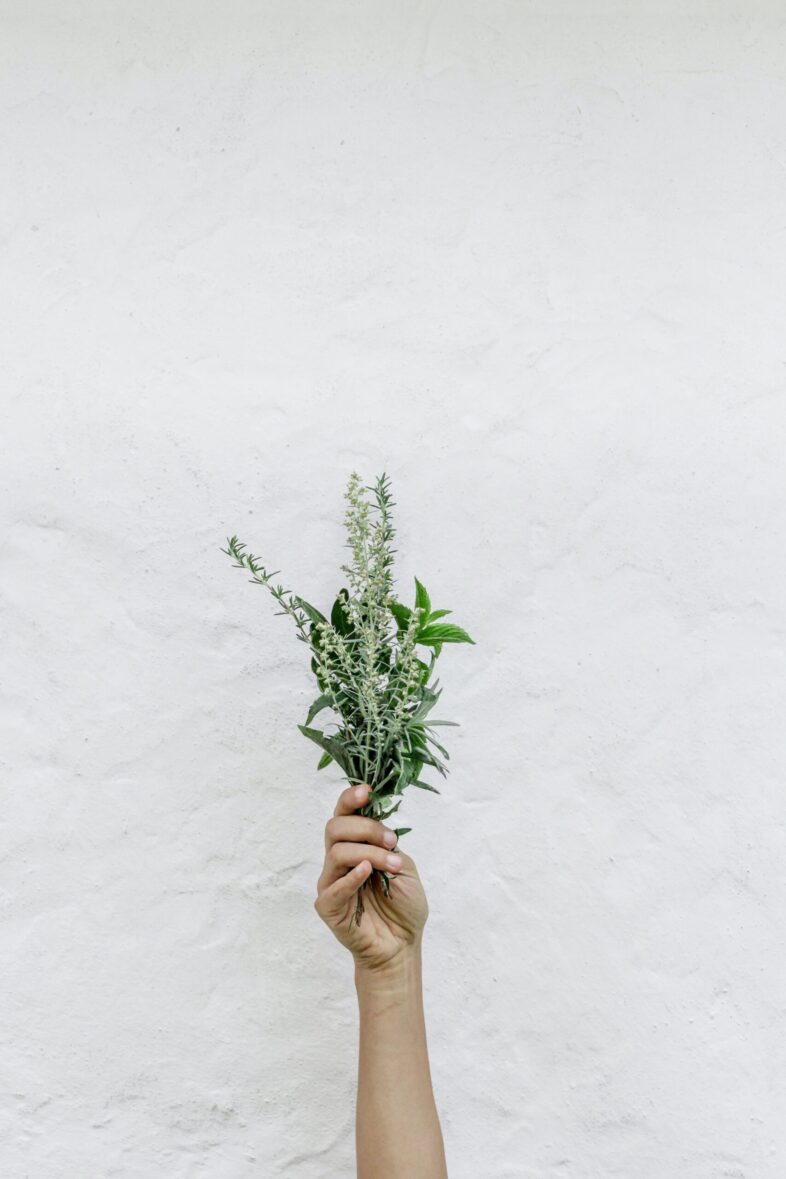After a peaceful meditation session, you may find yourself wondering if there are any recommended practices or rituals to enhance the benefits. Well, you’re in luck! In this article, we will explore the exciting world of post-meditation practices and rituals that can help you extend and deepen the tranquility you’ve cultivated during your meditation sessions. So, sit back, relax, and discover the wonderful ways you can enhance your post-meditation experience. Yes, there are several recommended post-meditation practices and rituals that can help deepen your mindfulness practice and bring more balance into your life. These practices encompass physical activities, breathing techniques, mindfulness exercises, visualization techniques, loving-kindness practices, self-reflection exercises, chanting and mantras, nature connection, mindful movement, and community practices. Each of these practices offers unique benefits and can enhance your overall well-being. Let’s explore some of these practices in more detail.
Physical Practices
Yoga
Yoga is a holistic practice that combines physical postures, breath control, and meditation. It helps to increase flexibility, strength, and balance, while also calming the mind and promoting relaxation. Engaging in a yoga practice after meditation can help ground and integrate the benefits of your meditation session into your body and daily life.
Qi Gong
Qi Gong is an ancient Chinese practice that involves gentle movements, deep breathing, and focused intention. It promotes the flow of qi (life energy) throughout the body, helps to balance the mind and body, and cultivates a sense of calm and vitality. Practicing Qi Gong after meditation can help further cultivate mindfulness, energy flow, and overall well-being.
Tai Chi
Similar to Qi Gong, Tai Chi is a Chinese martial art that involves slow, flowing movements and deep breathing. It cultivates mindfulness, promotes relaxation, and enhances balance, coordination, and flexibility. Incorporating Tai Chi into your post-meditation routine can help you maintain a state of calm and centeredness throughout the day.
Walking Meditation
Walking meditation is a mindfulness practice that involves paying deliberate attention to each step and the sensations of the body while walking. It can be done in nature or within a designated space. Walking meditation after seated meditation offers a transition between stillness and movement, allowing you to integrate mindfulness into daily activities and connect with the present moment.
Breathing Techniques
Diaphragmatic Breathing
Diaphragmatic breathing, also known as belly breathing or deep breathing, involves consciously using your diaphragm to breathe deeply into your belly. It helps activate the relaxation response, reduces anxiety and stress, and increases oxygen flow throughout the body. Practicing diaphragmatic breathing after meditation can help maintain a sense of calm and focus throughout the day.
Alternate Nostril Breathing
Alternate nostril breathing is a yogic breathing technique that involves alternating breaths between the left and right nostrils using the fingers. It balances the flow of energy in the body, enhances mental clarity, and promotes a sense of harmony and balance. Incorporating alternate nostril breathing into your post-meditation routine can help balance your energy and bring a sense of centeredness and clarity.
Box Breathing
Box breathing, also known as four-square breathing, is a simple yet effective breathing technique that involves inhaling, holding the breath, exhaling, and holding the breath again in equal counts. It helps regulate the nervous system, reduce stress, and enhance focus and concentration. Adding box breathing to your post-meditation practice can help extend the benefits of meditation and promote a state of calm and relaxation.

This image is property of images.unsplash.com.
Mindfulness Practices
Gratitude Journaling
Gratitude journaling involves writing down the things you are grateful for on a regular basis. It cultivates a positive mindset, shifts the focus towards appreciation, and enhances overall well-being. Engaging in gratitude journaling after meditation can help deepen your sense of gratitude and bring greater awareness to the abundance in your life.
Body Scan
A body scan is a mindfulness practice that involves systematically scanning your body from head to toe, bringing attention and awareness to each body part and any sensations that arise. It promotes relaxation, body awareness, and helps release tension and stress. Adding a body scan to your post-meditation routine can help deepen your mind-body connection and promote physical and mental relaxation.
Mindful Eating
Mindful eating is a practice that involves paying deliberate attention to the entire process of eating, from the preparation of the food to the experience of tasting and chewing. It helps cultivate a healthy relationship with food, enhances enjoyment and satisfaction, and promotes mindful living. Incorporating mindful eating into your post-meditation practice can help you savor each bite, make conscious food choices, and nourish your body and soul.
Visualization
Creative Visualizations
Creative visualizations are a form of meditation that involves mentally visualizing positive scenes, scenarios, or experiences. It helps activate the imagination, elicits positive emotions, and enhances the manifestation of goals and desires. Practicing creative visualizations after meditation can help harness the power of the mind and bring greater clarity, focus, and positivity into your life.
Metta Meditation
Metta meditation, also known as loving-kindness meditation, involves cultivating a deep sense of compassion, love, and kindness towards oneself and others. It involves repeating phrases or mantras to radiate unconditional love and well-wishes. Engaging in Metta meditation after meditation encourages an open heart, fosters connection, and promotes well-being for oneself and others.

This image is property of images.unsplash.com.
Metta Practice (Loving-Kindness)
Sending Loving-Kindness to Oneself
Sending loving-kindness to oneself is a Metta practice that involves directing loving and kind thoughts and wishes towards oneself. It helps cultivate self-compassion, self-love, and self-care. Engaging in self-loving-kindness practice after meditation can help deepen self-acceptance, foster inner peace, and nurture a positive relationship with oneself.
Sending Loving-Kindness to Others
Sending loving-kindness to others is a Metta practice that involves directing loving and kind thoughts and wishes towards others, including loved ones, friends, acquaintances, and even challenging individuals. It promotes empathy, connection, and fosters universal love and compassion. Including sending loving-kindness to others in your post-meditation routine can help cultivate a sense of interconnectedness and expand your capacity for compassion and understanding.
Self-Reflection Exercises
Journaling
Journaling is a self-reflective practice that involves writing down thoughts, feelings, and experiences. It offers an opportunity for self-exploration, emotional processing, and self-expression. Engaging in journaling after meditation can help integrate insights and experiences from your practice, provide clarity, and promote personal growth and self-awareness.
Thought Awareness
Thought awareness is a self-reflection exercise that involves observing and becoming aware of your thoughts without judgment. It helps cultivate mindfulness, reduce reactivity, and promote self-awareness. Practicing thought awareness after meditation can help bring mindfulness into your daily life and create a greater sense of mental clarity and emotional balance.

This image is property of images.unsplash.com.
Chanting and Mantras
Om Chanting
Om chanting is a powerful mantra practice that involves repeating the sacred sound “Om” either aloud or mentally. It helps calm the mind, purify energy, and connect to a deeper sense of consciousness and spirituality. Incorporating Om chanting into your post-meditation routine can enhance your sense of inner peace, spiritual connection, and overall well-being.
Mantra Repetition
Mantra repetition involves repeating a specific word or phrase, such as “peace,” “love,” or “I am present.” It helps focus the mind, cultivate mindfulness, and promote a sense of peace and tranquility. Adding mantra repetition to your post-meditation practice can help anchor your awareness and bring a greater sense of presence and serenity.
Nature Connection
Forest Bathing
Forest bathing, also known as Shinrin-Yoku, is a practice that involves immersing oneself in nature and consciously engaging the senses. It helps reduce stress, enhance mood, and promote a sense of awe and interconnectedness with the natural world. Engaging in forest bathing after meditation offers an opportunity to connect with nature, access its healing benefits, and deepen your sense of presence and gratitude.
Outdoor Meditation
Outdoor meditation involves practicing meditation in nature, such as in a park, garden, or by the beach. It allows you to connect with the natural elements, embrace the beauty of your surroundings, and deepen your meditation practice in a serene outdoor environment. Incorporating outdoor meditation into your post-meditation routine can help bring a sense of peace, grounding, and connection to the present moment.
Mindful Movement
Dance Meditation
Dance meditation is a mindful movement practice that involves expressing oneself through spontaneous or structured movement. It promotes self-expression, creativity, and embodiment of emotions. Engaging in dance meditation after meditation offers a dynamic way to integrate mind, body, and spirit, and tap into the joy and freedom of movement.
Qigong
Qigong, as mentioned earlier, is a mindful movement practice that combines gentle movements, breath control, and visualization. It promotes the flow of energy, enhances vitality, and cultivates a state of balance and harmony. Adding Qigong to your post-meditation routine can help further integrate mindfulness into movement, release tension, and increase energy flow.
Tai Chi
Tai Chi, also mentioned earlier, is a mindful movement practice that involves slow, flowing movements and deep breathing. It cultivates mindfulness, relaxation, and physical balance. Engaging in Tai Chi after meditation can help maintain a sense of calm and centeredness, enhance physical coordination, and foster a deeper mind-body connection.
Community Practices
Dharma Circles
Dharma circles are gatherings of individuals who come together to explore spiritual teachings and engage in group discussions. It offers an opportunity for shared learning, support, and transformation. Joining a dharma circle after meditation can facilitate a sense of community, foster deeper understanding, and inspire personal growth along your spiritual journey.
Satsang
Satsang, a Sanskrit term meaning “gathering in truth,” involves coming together with like-minded individuals to engage in spiritual practices, such as chanting, meditation, and sharing wisdom teachings. It fosters a sense of connection, inspiration, and collective awakening. Participating in satsang after meditation can deepen your spiritual practice, nurture community, and provide a space for profound insights and transformation.
Group Meditation
Group meditation involves practicing meditation with others in a shared space or virtually. It offers a supportive environment, collective energy, and a sense of unity. Participating in group meditation after your personal meditation practice can amplify the benefits of meditation, enhance your focus and concentration, and deepen your sense of interconnectedness.
In conclusion, incorporating post-meditation practices and rituals into your daily routine can enhance your mindfulness practice, promote well-being, and foster personal growth. Whether you engage in physical practices, breathing techniques, mindfulness exercises, visualization techniques, loving-kindness practices, self-reflection exercises, chanting and mantras, nature connection, mindful movement, or community practices, each practice offers unique benefits and opportunities for growth. Experiment with different practices and find what resonates with you, allowing them to support you in cultivating mindfulness, balance, and joy in your life. Remember, these practices are meant to be explored with a sense of curiosity, openness, and compassion towards yourself and others.
Hi, I’m the Editor of Daily Guided Meditation. Meditation is not just a practice for me, but a way of life. I believe in the power of mindfulness to bring peace and balance into our busy lives. That’s why I created this website, where you can find daily guided meditations to help you on your journey of self-discovery and inner peace. Join our community and experience the transformative benefits of mindfulness through soothing meditations, relaxation techniques, and valuable resources. Prioritize self-care and start your day with intention by exploring our website today. Together, let’s find serenity amidst the chaos.


